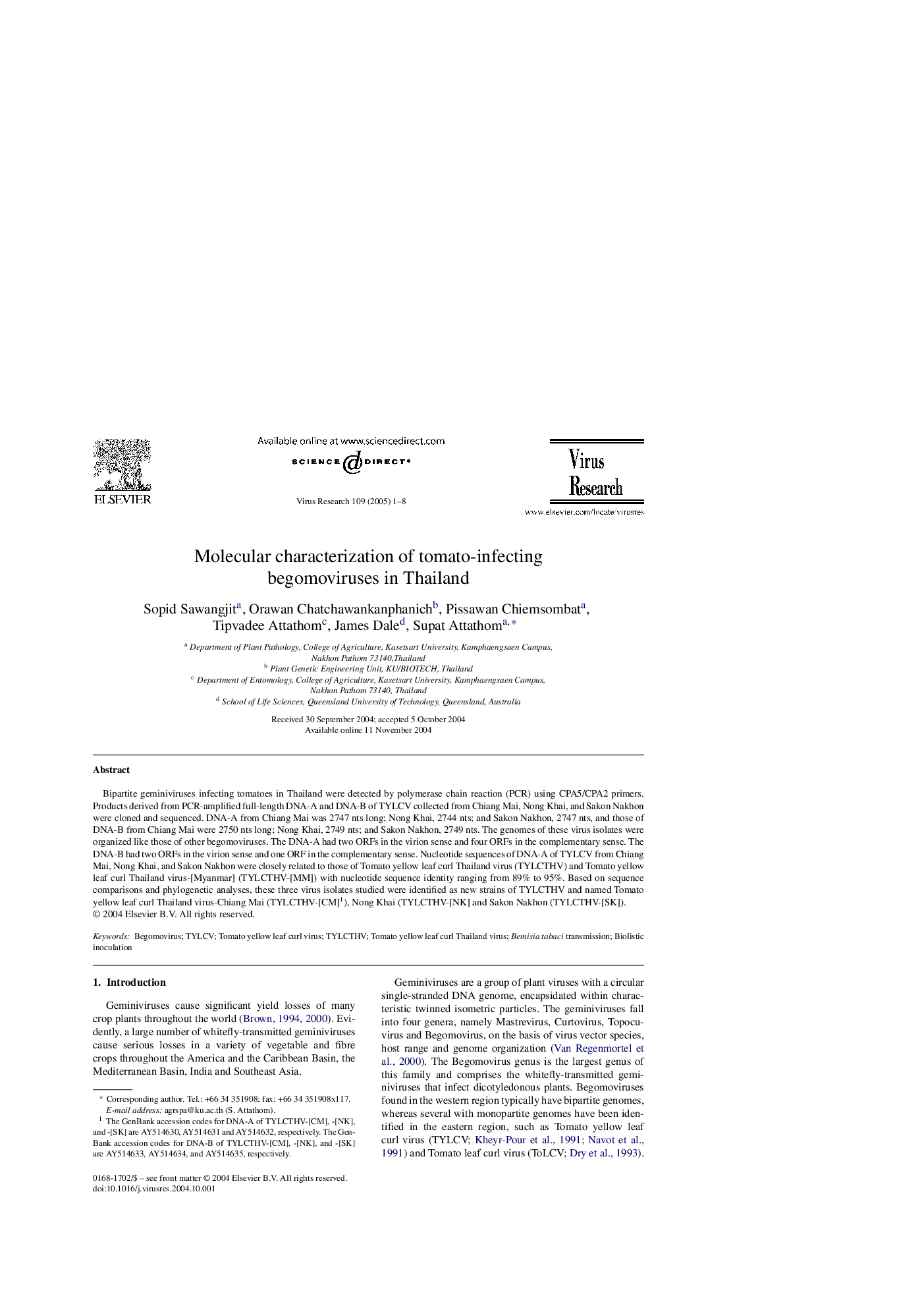| Article ID | Journal | Published Year | Pages | File Type |
|---|---|---|---|---|
| 9289484 | Virus Research | 2005 | 8 Pages |
Abstract
Bipartite geminiviruses infecting tomatoes in Thailand were detected by polymerase chain reaction (PCR) using CPA5/CPA2 primers. Products derived from PCR-amplified full-length DNA-A and DNA-B of TYLCV collected from Chiang Mai, Nong Khai, and Sakon Nakhon were cloned and sequenced. DNA-A from Chiang Mai was 2747 nts long; Nong Khai, 2744 nts; and Sakon Nakhon, 2747 nts, and those of DNA-B from Chiang Mai were 2750 nts long; Nong Khai, 2749 nts; and Sakon Nakhon, 2749 nts. The genomes of these virus isolates were organized like those of other begomoviruses. The DNA-A had two ORFs in the virion sense and four ORFs in the complementary sense. The DNA-B had two ORFs in the virion sense and one ORF in the complementary sense. Nucleotide sequences of DNA-A of TYLCV from Chiang Mai, Nong Khai, and Sakon Nakhon were closely related to those of Tomato yellow leaf curl Thailand virus (TYLCTHV) and Tomato yellow leaf curl Thailand virus-[Myanmar] (TYLCTHV-[MM]) with nucleotide sequence identity ranging from 89% to 95%. Based on sequence comparisons and phylogenetic analyses, these three virus isolates studied were identified as new strains of TYLCTHV and named Tomato yellow leaf curl Thailand virus-Chiang Mai (TYLCTHV-[CM]1), Nong Khai (TYLCTHV-[NK] and Sakon Nakhon (TYLCTHV-[SK]).
Related Topics
Life Sciences
Immunology and Microbiology
Virology
Authors
Sopid Sawangjit, Orawan Chatchawankanphanich, Pissawan Chiemsombat, Tipvadee Attathom, James Dale, Supat Attathom,
